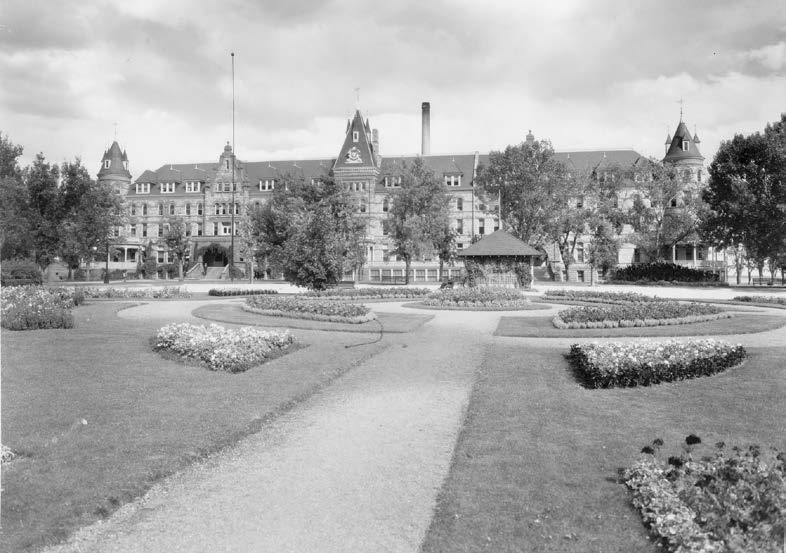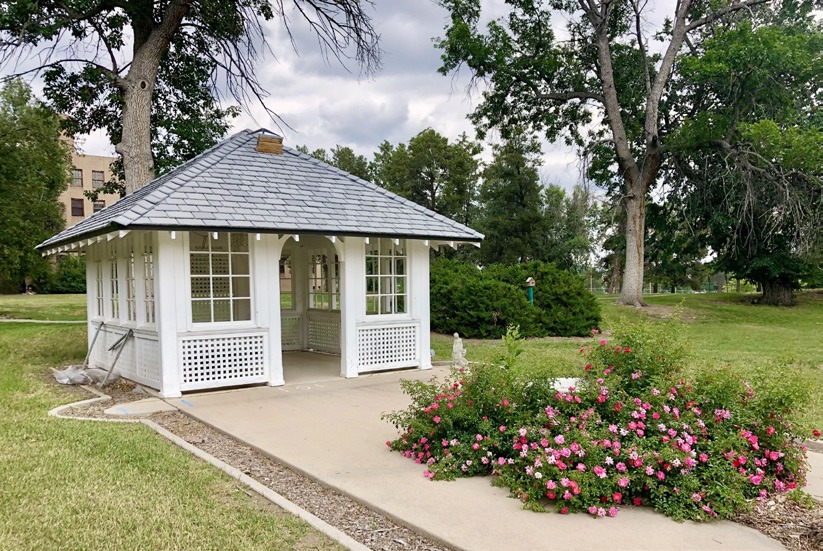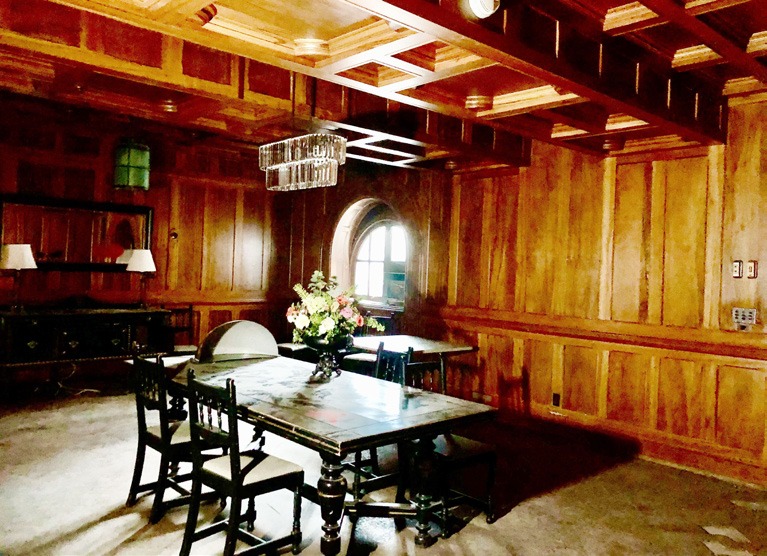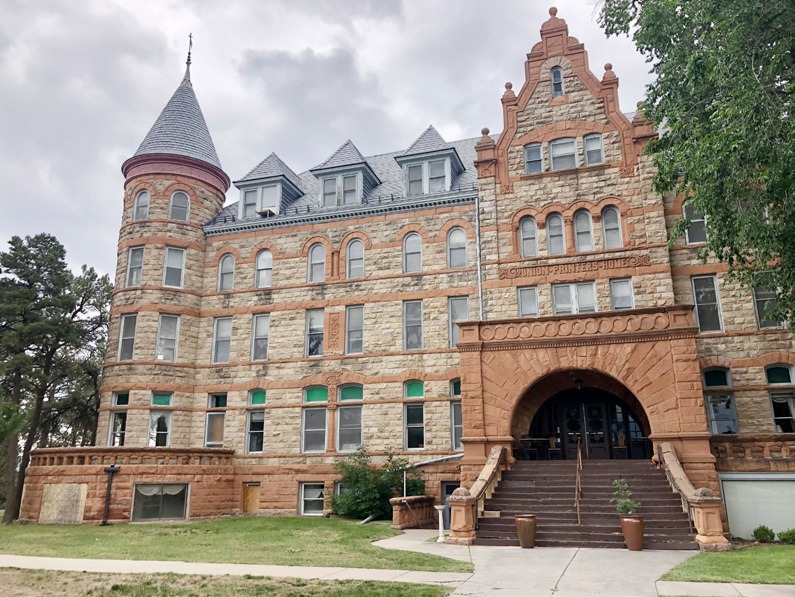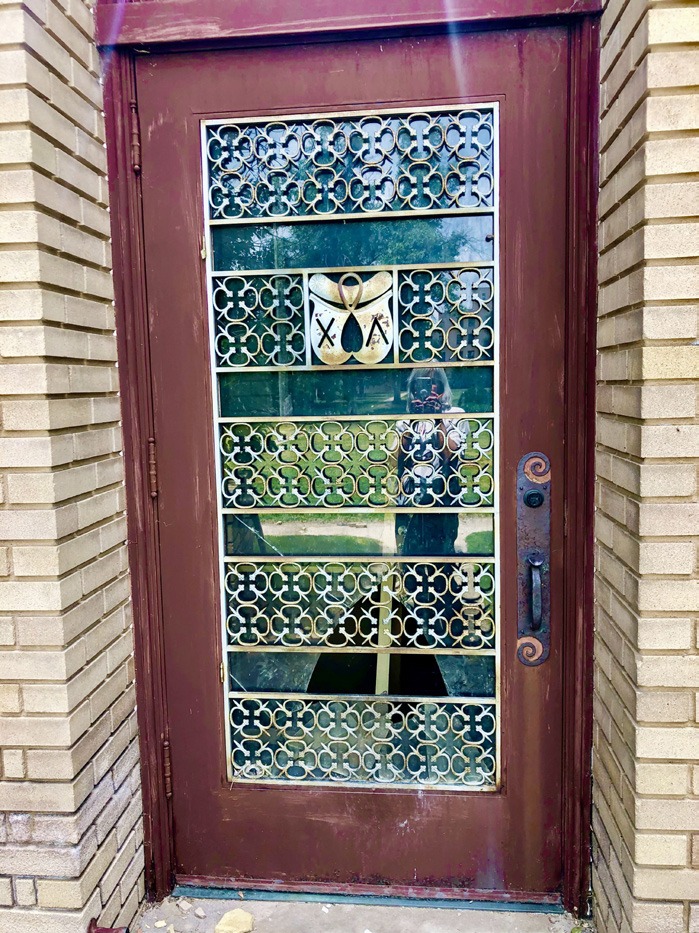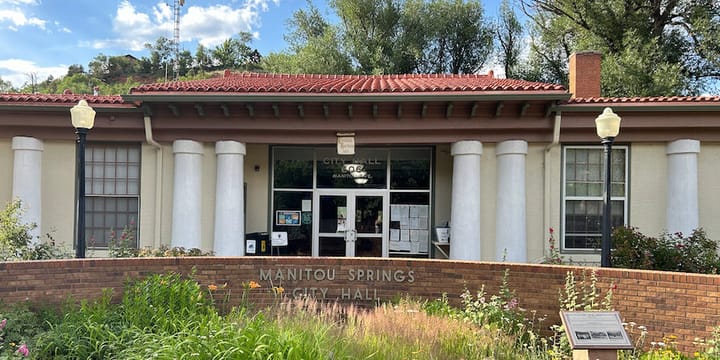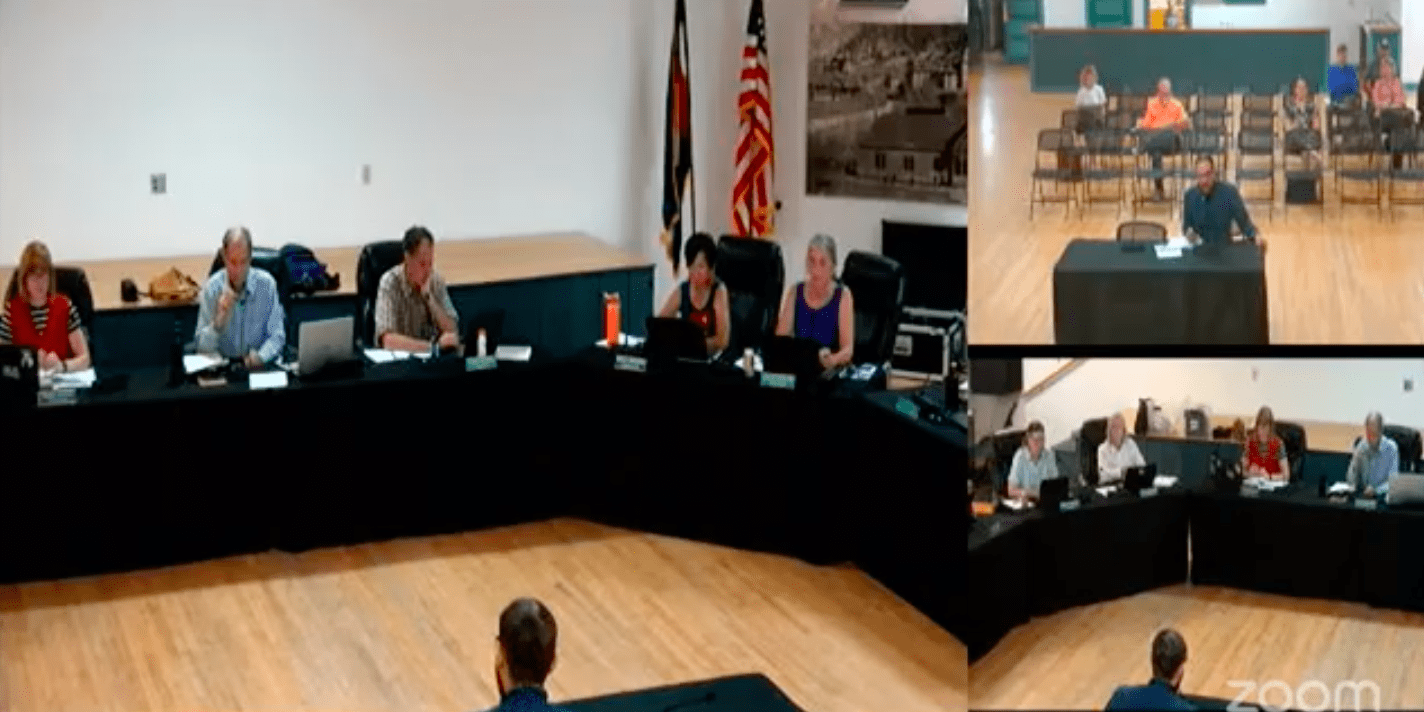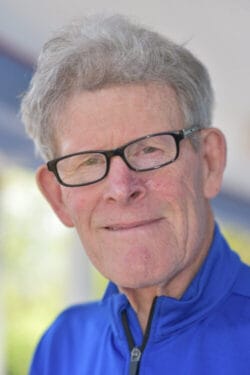Union Printers Home: Preserving and continuing a legacy
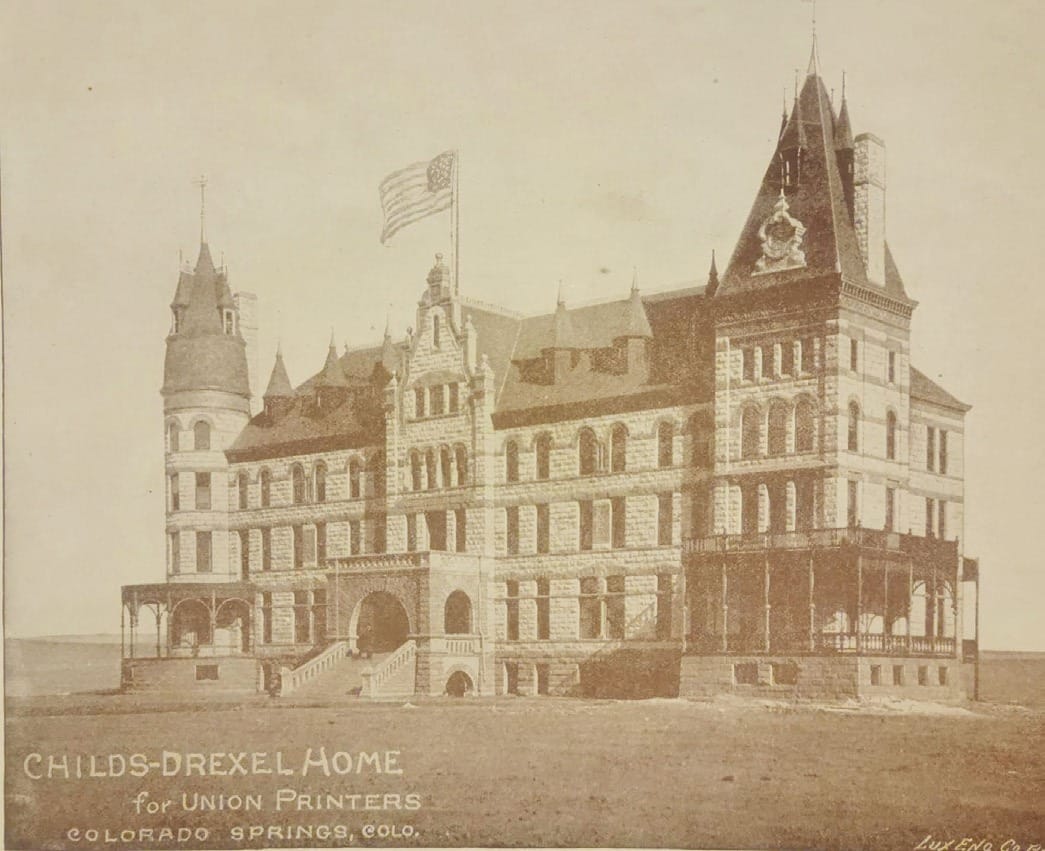
The towers can be seen rising above the treetops when you approach the stone archway leading onto the grounds of the Union Printers Home. It was called "The Castle On the Hill" back in its heyday, and with good reason. Composed of 300 acres including an onsite farm, parklike settings surrounding 20 to 30 buildings, its own power plant, and stellar views of the front range and Pikes Peak, UPH sustained its own little city within a growing and developing Colorado Springs.
The roots of UPH
To get a sense of what's to come for the UPH, it's important to have knowledge of its beginnings. Back in the early 1890s, Colorado Springs was a spirited pioneer city growing by leaps and bounds due to the rapid expansion of the mining and railroad industries, with a reputation as a health and wellness destination.
I think it’s a wonderful idea. - Gloria Martinez, Knob Hill resident
Enter the International Typographical Union, one of the world's largest and most powerful trade unions. Eighty acres of land were donated by the City of Colorado Springs, and a donation of $10,000 was made by two wealthy Philadelphia businessmen to launch UPH. The vision was to create a grand resort that would be a haven for recovery, rest, and respite of male and female union members in good standing. Potential residents sought treatment for respiratory ailments, including tuberculosis, and "printer's lung," a form of black lung disease caused by conditions of the printing work environment.
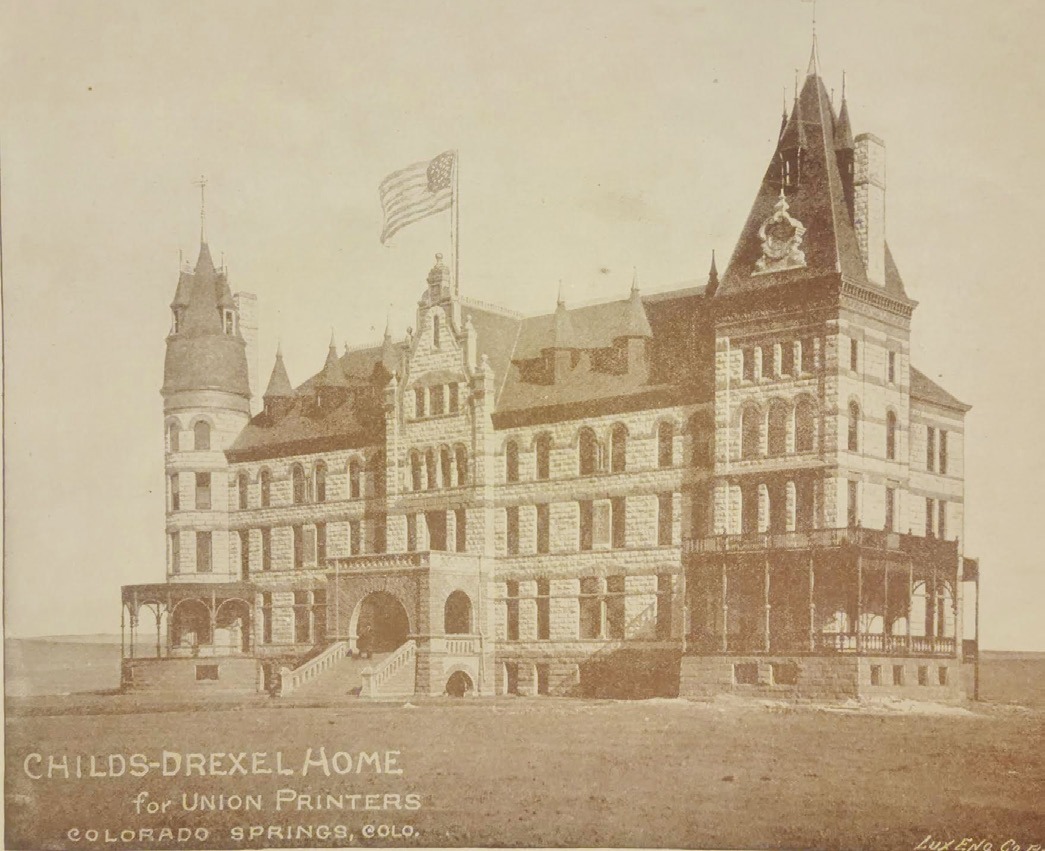
The property, consisting of rolling farmland and prairie, was a mile and a half east of downtown Colorado Springs, at what is now 101 S. Union Blvd. Nearby neighbors at the time were the Colorado School for the Deaf and the Blind and the original St. Francis Hospital.
By 1891, the impressive "castle," constructed of gray Castle Rock stone and red sandstone, was completed, and it was dedicated in 1892. For the next 130 years, the UPH provided a community to recover or retire. At its height, it housed 400 to 450 residents at a time, and upwards of 40,000 people over the years.
UPH's historic role in the city
UPH was an important influence on the Colorado Springs community, not only providing a culture of healing and respite, but as a top resource for employment. The magnificent castle and grounds quickly became a tourist destination as visitors flocked to UPH for tours, musical performances, celebrations, holiday festivities and church services.
Over the years, structures were built, renovated, and torn down. Acreage was added and sold off, and care was eventually opened up to non-union members due to shifting financial climates. In 2013, the last printer to be housed there died, and what had become a Colorado Springs institution was sold to a nursing home group in 2014. The doors were permanently closed in 2020 - putting the four remaining buildings at high risk for demolition.
In 2021, a dedicated group of local philanthropic families and civil-minded investors, UPH Partners, took notice and swooped in to purchase the remaining 26 acres of property. Preservation of the 100,000 sq. ft. castle was the primary concern.
The partners are committed to preserving the historical character of the property and the buildings. - Ellie Hinkle, Director of History and Archives with UPH
"I think they have done a remarkable job of taking care of the whole history, including the lives of all who were touched by UPH", says Ellie Hinkle, Director of History and Archives with UPH. "The partners are committed to preserving the historical character of the property and the buildings. They set the standard for how this historic preservation and adaptive reuse should be done".
An abundance of treasures has been found at the site, and many are now housed and being catalogued in the basement of the Colorado Springs Gazette. Incredible finds include records of all who were admitted to UPH, historic photos, and a huge bound book that contains a complete copy of every newspaper and magazine that had an article recording the dedication of the home in 1892.
UPH today
Seeing the property and remaining buildings today creates an air of excitement and anticipation. The exterior of the castle is not only strikingly beautiful, but appears to have been built for the ages. Inside, much of the original detailing is intact. High ceilings with plaster ornamentation, ornate woodwork, original flooring, and curved doorways and windows are just some of the treasures. It's fascinating to visualize the day-to-day living of the residents while moving through the light-filled hallways, spacious dining room, cozy library, auditorium, and recreation room.
Behind the main building are treasures seldom seen by the public. A white wooden gazebo is the centerpiece, bookended by two large Art Deco structures: the north dormitory, and the sanatorium. Between them is the solidly built boiler building - that was the power plant, laundry, and maintenance building for the complex.
Project team member Isaac Norton explains how the property grounds are currently being activated for public benefit. As plans for Printers Hill move forward, onsite events will periodically be available to the public on the sloping front lawn such as a car show in August, and a fundraiser for the Humane Society of the Pikes Peak Region called Pawtoberfest on Sept. 13.
What's to come
Plans are in the works to create a mixed-use community that honors the historic preservation of the site. The size and scope of the project is gradually coming into focus. Sasaki, a multidisciplinary firm, has produced a master plan envisioning the new "Printers Hill" as a unique destination "that speaks to the history, but also looks toward the future." Working with community teams and focus groups, with an eye towards the culture and history of Colorado Springs, the vision is nearing completion.
Susan Pattee, one of the UPH Partners, says, "We have envisioned the corridor from Union Blvd. to the steps of UPH being Colorado Springs' front lawn." Next steps, she notes, are in process: selecting a partner developer within 6 to 9 months, and ongoing research and due diligence to preserve the castle as a hotel and possible residential space.
Horton notes the exciting potential for the existing buildings, including the possibility of the boiler building becoming a festive food and beverage hall, and the two Art Deco structures morphing into a residential multiplex.
Phasing of the development will follow to maximize income for funding future phases. The first stage will likely include repurposing the castle, beginning in around two years. Within the next 7 to 10 years, public areas including parks, restaurants, retail and entertainment venues, and gathering spaces will complement a dynamic urban district.
"The biggest hurdle so far," according to Pattee, "has been finding the right resources to do such a large-scale, high-quality, and unique project."
Community collaboration is key
The input of residents in the adjoining neighborhoods has continuously been taken into consideration. Knob Hill resident Gloria Martinez is enthusiastic. "I think it's a wonderful idea," she said. "The developers are kind people who presented themselves transparently. They are respectful and have integrity … I think they honor the heritage of minorities in the neighborhood."
Knob Hill Neighborhood Association board member Anthony Amis says, "I think we are certainly excited that the property is going to be occupied rather than being vacant, as it has been in years past."
Amis also feels that the adjoining neighborhoods appreciate the collaboration that is being formed with the developers.
"In a lot of ways," says the archivist Hinkle, "the neighborhoods were influenced by the UPH. I think we now have a unique opportunity to reconnect and rekindle that relationship."
Pattee sends this message out to Colorado Springs: "We are eager to get this done just as the community is, and we are grateful for patience in doing it the right way."
The print and earlier online version of this article misstated Isaac Norton's last name. The Bulletin regrets the error. -- ed
